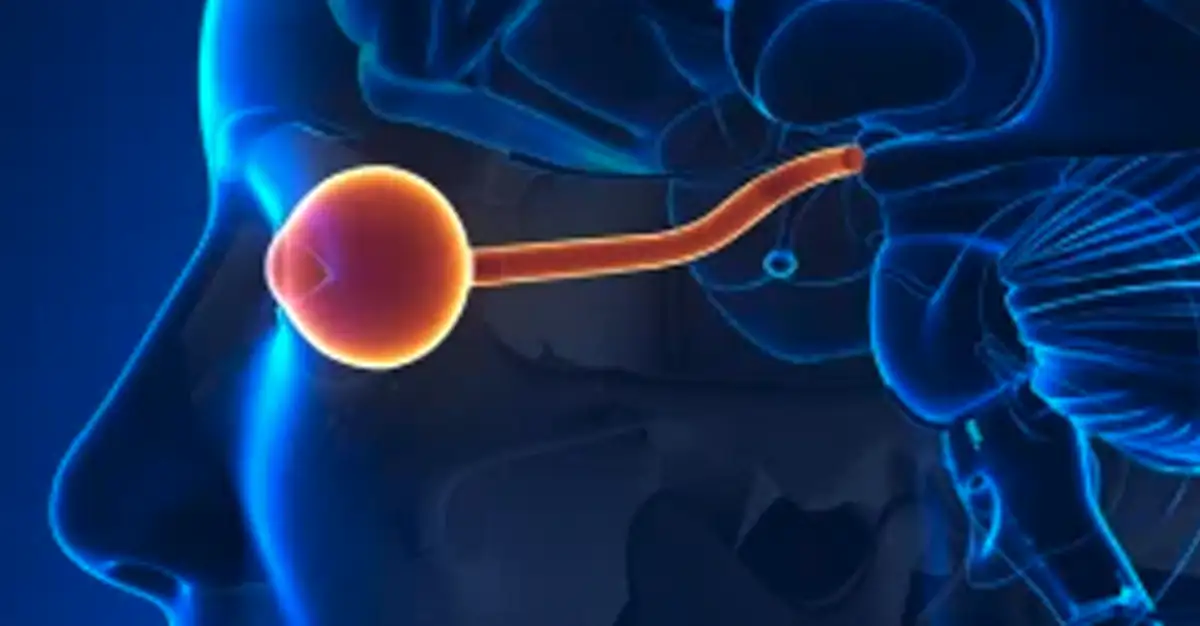< Back to Diagnosing Epilepsy Forward to Treatments and Therapies >
Table of Contents:
- Epilepsy Syndromes
- How are Epilepsy Syndromes Classified?
- Dravet Syndrome
- Lennox-Gastaut Syndrome (LGS Syndrome)
- West Syndrome (aka Infantile Spasms)
- Genetic Febrile Seizures Plus (GEFS+)
- Myoclonic atonic epilepsy (MAE)
- Childhood Absence Epilepsy (CAE)
- Juvenile Myoclonic Epilepsy (JME)
Epilepsy Syndromes
In addition to seizure type and epilepsy type, a person’s epilepsy diagnosis may be further categorized by their epilepsy syndrome. An epilepsy syndrome is characterized by a distinct cluster of clinical features, signs, and/or symptoms in addition to seizures. Not everyone has an epilepsy syndrome, but correctly diagnosing a syndrome can impact (or even improve) patient outcomes.
While there are many epilepsy syndromes, several are worth noting as they are more common than others. In this section, we will provide general, high-level information for a select group of epilepsy syndromes, such as West Syndrome, Dravet syndrome, and Lennox-Gastaut syndrome.
This list is not an exhaustive list of all epilepsy syndromes. This page will evolve as more syndromes are added.
How are Epilepsy Syndromes Classified?
Epilepsy syndromes are the third level of epilepsy diagnosis in the 2017 revised guidelines from the ILAE. It is important to accurately classify epilepsy syndromes as it helps the doctor precisely diagnose the person’s epilepsy and prescribe antiseizure medications (ASMs) that are most likely to be effective. Additionally, classifying epilepsy syndromes also gives a better idea of the prognosis that is relevant to the person, and helps the doctor predict whether lifelong ASM therapy is needed, or if there is a chance that the person may eventually be able to be weaned off the ASM.
Dravet Syndrome
Dravet syndrome[6], previously called severe myoclonic epilepsy of infancy (SMEI) is a rare epilepsy syndrome that occurs in early infancy or childhood. Symptoms of Dravet syndrome may range from mild to severe.
Children that have Dravet syndrome show seizures often before they reach age one.
As many as 80% of cases of Dravet syndrome are caused by defects in a gene called SCN1A. This gene codes for the sodium channel, which is essential for brain functioning.
Children with Dravet syndrome have focal or generalized seizures that are often prolonged and may be provoked by a change in temperature, for example, when the child gets out of a bath. As the child grows older, other seizure types may appear.
Dravet syndrome can be diagnosed with genetic testing to determine whether there are mutations in the SCN1A gene. Additional diagnostic parameters consist of normal or near-normal cognitive function before seizure development and the presence of seizures, such as generalized or myoclonic seizures.
Seizures in Dravet syndromes can be controlled to some extent by ASMs. Some ASMs, like cannabidiol and fenfluramine, are used in children aged two and over.
Seizures in Dravet syndrome typically lessen in number and duration with age, and cognitive function usually stabilizes. Learn more by watching our Dravet syndrome Epilepsy Explained.
Lennox-Gastaut Syndrome (LGS Syndrome)
Lennox-Gastaut syndrome[8], abbreviated to LGS is a severe epilepsy syndrome where the person has multiple types of seizures that vary between individuals. Seizures in Lennox-Gastaut Syndrome occur in early childhood, usually before the child is four years of age.
The causes of LGS could be defects in brain development, tuberous sclerosis, lack of oxygen in the perinatal period, head injury, infection, or genetic or metabolic defects. Many times, the cause may be unidentifiable.
There are many types of seizures seen in LGS. An individual may have tonic seizures, staring spells, atonic seizures (where there is a brief loss of muscle tone potentially leading to a fall), myoclonic seizures, and generalized tonic-clonic seizures. There may be periods where there are many seizures, interspersed with periods where there are relatively few.
Lennox-Gastaut syndrome is diagnosed using three characteristics:
- EEG where telltale patterns (such as slow spike-wave) are seen
- Multiple seizure types
- Cognitive dysfunction
- LGS may be difficult to treat, but several ASMs may be used to control seizures. Recently, cannabidiol was approved for the treatment of LGS in children two and older. The ketogenic diet, vagus nerve stimulation, and epilepsy surgery may also be done.
The prognosis for LGS depends on the severity of seizures and varies from person to person. Unfortunately, complete recovery is rare.
West Syndrome (aka Infantile Spasms)
West Syndrome[5] is an epilepsy syndrome that is seen in infancy and childhood and is characterized by spasms which is a specific type of seizure. The onset of West syndrome is typically in the first year of a child’s life, usually between four and eight months.
Some causes of West syndrome are brain injury during birth, disorders of metabolism, and genetic defects. Sometimes, no cause may be found.
The spasms in West syndrome look like the child is suddenly bending forward and stiffening their arms and legs for 1-2 seconds. There may be arching of the back as well. Spasms usually occur in clusters, and there may be hundreds of spasms per day.
West syndrome is diagnosed by the epileptic spasms mentioned above and a telltale EEG brainwave signal that is called “hypsarrhythmia.” Hormonal therapy is the first-line treatment, along with certain ASMs.
If the spasms are a result of brain injury, epilepsy surgery to remove the part of the brain may be helpful.
Since ongoing spasms have the potential to negatively impact brain development, it is necessary to start therapy as soon as possible.
The prognosis of children with West syndrome depends on the underlying cause. If treatment was quick, and if the child was developing normally before the spasms appeared, they may do well. Sometimes, children with West syndrome may develop additional types of syndromes such as Lennox-Gastaut syndrome.
Genetic Febrile Seizures Plus (GEFS+)
Genetic febrile seizures plus[7], abbreviated to GEFS+, is an epilepsy syndrome typically seen in families. When two or more members of a family exhibit seizures typical of GEFS+, the family is defined as a “GEFS+ family.”
GEFS+ is usually seen in infancy through age five. Sometimes, children five and older may develop febrile seizures. Seizures in GEFS+ end in adolescence.
Mutations in genes such as SCN1A, SCN1B, and GABRG2 are often involved in the febrile seizures seen in GEFS+. The most common types of seizures in GEFS+ are simple febrile seizures or febrile seizures plus (FS+). Simple febrile seizures begin in infancy and stop at age five. If febrile seizures last beyond age five, they are called FS+.
The most important method to diagnose GEFS+ is the family history. The doctor may want to talk to the patient’s extended family to see if anyone remembers a family member having febrile seizures. Other tests are EEG, MRI, and genetic testing.
ASMs are usually able to control seizures in GEFS+. Rarely, dietary therapies such as the ketogenic diet, or epilepsy surgery may be used.
Seizures in GEFS+ may stop by adolescence in which case ASMs can be tapered off and eventually stopped. Usually, development is normal.
Myoclonic atonic epilepsy (MAE)
Myoclonic atonic epilepsy (MAE), commonly known as Doose syndrome, is a rare childhood epilepsy syndrome. The first seizure in MAE occurs between 2-6 years of age, with boys being more affected than girls.
About one-third of children with MAE have a genetic mutation in one of the following genes: SCN1A, SCN1B, SCN2A, SLC2A1, CHD2, SYNGAP1, or KIAA2022.
MAE is associated with many types of seizures such as generalized tonic-clonic seizures, drop seizures, absence seizures, and myoclonic seizures.
MAE is diagnosed based on the description of seizures, as well as information from the EEG and MRI. MAE may be treated using ASMs, though sometimes, it may be difficult to treat. Some medications should be avoided as they can worse seizure types. Early adoption of the ketogenic diet may be effective in treating MAE.
About two-thirds of children with MAE outgrow their epilepsy and can go off of medication. The remaining one-third may have sustained intellectual disability.
Epileptic Encephalopathy with continuous waves during sleep (CSWS)
Epilepsy with continuous spike-wave during sleep, abbreviated to CSWS is a rare form of childhood epilepsy syndrome. Children may be developing normally before seizures appear, but seizures may be accompanied by slow cognitive decline.
CSWS begins in children when they are between two and 12 years of age; typically, seizure onset is at four or five years of age. Boys are usually more affected by CSWS than girls.
CSWS may be caused by brain defects, genetic mutations, or metabolic disorders. A mutation in the gene GRIN2A has been shown to play a role in CSWS.
Seizures in CSWS may be of many types: focal seizures that progress to generalized seizures, atonic seizures, and absence seizures.
As the name suggests, seizures usually occur in sleep.
CSWS is diagnosed with a thorough family history, a description of seizures, and the child’s developmental trajectory. EEG (sometimes a video-EEG) that is done overnight to capture seizures during sleep may be done. Genetic tests may also be done.
ASMs are used to control seizures in CSWS; often, more than one ASM is used. If seizures persist even after multiple ASMs, epilepsy surgery may be done.
Children with CSWS may improve as they approach adolescence, their seizures may decrease and cognitive functioning may get better. In some children, abnormalities in EEG may be seen even as they transition into adulthood.
Childhood Absence Epilepsy (CAE)
Childhood absence epilepsy, abbreviated CAE, is an epilepsy syndrome that begins in young children and is characterized by absence seizures. CAE is typically seen when children are between four and eight years old.
The causes for CAE are complex and not completely understood; however, a combination of genetic and environmental factors is thought to be at play. Mutations in a gene called GABRA1 may be seen in some children with CAE. Other mutations may be in genes for ion channels that are responsible for the proper functioning of the brain.
The main symptom of CAE is the absence seizures. These seizures last 10-20 seconds; the child may stare blankly and be unresponsive. There may be blinking of the eyes and repetitive movements like chewing. Seizure episodes end abruptly, and children may have many absence seizures a day.
A description of the staring spells is most important in diagnosing CAE, as is EEG. Hyperventilation and exposure to rapid, flashing lights may be done to provoke a seizure and capture its brainwaves.
ASMs such as ethosuximide, lamotrigine, and valproic acid manage seizures in CAE. If ASMs are not effective in controlling absence seizures, the ketogenic diet may be recommended.
Two-thirds of children with CAE respond well to treatment, the seizures disappear by adolescence, and the ASMs can be weaned off. The remaining one-third of children may develop other seizure types in adolescence.
Juvenile Myoclonic Epilepsy (JME)
Juvenile myoclonic epilepsy, abbreviated to JME is a common epilepsy syndrome that begins in adolescence. While the exact gene causing JME is not known, JME is inherited, as more than half of individuals with JME report a family member with seizures.
The most common seizure type in JME is called “myoclonic” seizures, which are characterized by sudden, shock-like muscle jerks in the arms or fingers.
Myoclonic seizures can be triggered by lack of sleep, fatigue, stress, and flashing lights. Individuals with JME may also have generalized tonic-clonic seizures and absence seizures.
JME is diagnosed using a description of the person’s seizures, family history, and EEG. The EEG brain waves in JME have a characteristic “spike and wave” pattern.
While ASMs are useful in JME, the most important is education around lifestyle modifications around seizure triggers and their management.
Individuals with JME should get adequate sleep and rest and should refrain from alcohol. Fortunately, seizures in JME are well-controlled; sometimes lifelong ASMs may be necessary. In some people with mild JME, weaning off the ASM may be a possibility.
Stay in the Loop
Sign up for our email list and get the latest epilepsy news right to your inbox.
Related Content
References:
- https://onlinelibrary.wiley.com/doi/abs/10.1111/j.1528-1157.1989.tb05316.x?sid=nlm%3Apubmed
- Fisher RS, Cross JH, D’Souza C, French JA, Haut SR, Higurashi N, et al. Instruction manual for the ILAE 2017 operational classification of seizure types Epilepsia. 2017 Apr;58:531-542.
- Scheffer IE, Berkovic S, Capovilla G, Connolly MB, French J, Guilhoto L, et al. ILAE classification of the epilepsies: Position paper of the ILAE Commission for Classification and Terminology Epilepsia. 2017 Apr;58:512-521.
- Ohtahara Syndrome Information Page. Available at: https://www.ninds.nih.gov/Disorders/All-Disorders/Ohtahara-Syndrome-Information-Page. Accessed July 5.
- Beal JC, Cherian K, Moshe SL. Early-onset epileptic encephalopathies: Ohtahara syndrome and early myoclonic encephalopathy Pediatr Neurol. 2012 Nov;47:317-323.
- Infantile Spasms Information Page. Available at: https://www.ninds.nih.gov/Disorders/All-Disorders/Infantile-Spasms-Information-Page. Accessed July 5.
- Dravet Syndrome Information Page. Available at: https://www.ninds.nih.gov/Disorders/All-Disorders/Dravet-Syndrome-Information-Page. Accessed July 5.
- Camfield P, Camfield C. Febrile seizures and genetic epilepsy with febrile seizures plus (GEFS+) Epileptic Disord. 2015 Jun;17:124-133.
- Lennox-Gastaut Syndrome Information Page. Available at: https://www.ninds.nih.gov/Disorders/All-Disorders/Lennox-Gastaut-Syndrome-Information-Page. Accessed July 5.
- https://www.ilae.org/files/dmfile/Syndrome-MethodologyFINALMARCH29.pdfA













